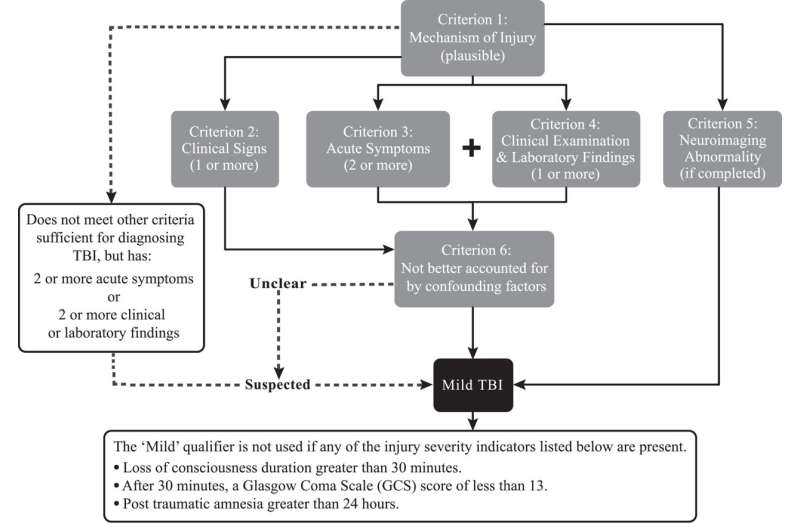This article has been reviewed according to Science X's editorial process and policies. Editors have highlighted the following attributes while ensuring the content's credibility:
fact-checked
peer-reviewed publication
trusted source
proofread
International group of experts redefines concussions

Doctors and other health-care providers have a new standard for diagnosing mild traumatic brain injury (TBI), thanks to a thorough process led by researchers from the University of B.C. and Harvard-affiliated Spaulding Rehabilitation Hospital.
"We've achieved consensus across a diverse range of experts in developing these new diagnostic criteria," said Dr. Noah Silverberg, associate professor in UBC's department of psychology, member of the Djavad Mowafaghian Centre for Brain Health and Centre for Aging SMART at Vancouver Coastal Health, and co-lead of the project. "Our hope is that this strong consensus will drive a global shift towards adopting these criteria, ultimately improving patient care and research consistency in the field."
Mild traumatic brain injuries—or concussions, as most people call them—are notoriously tricky to diagnose because they usually aren't detectable by brain scans and symptoms can be diverse, subtle, and overlap with other conditions.
Criteria used to diagnose such injuries have become wildly inconsistent. A definition published by the American Congress of Rehabilitation Medicine (ACRM) in 1993 has spawned so many offshoots as research has evolved over the past 30 years that a patient's diagnosis now really depends on the criteria being used.
One study applied various sets of criteria to 12,000 pediatric cases and found that the proportion of children diagnosed with mild TBI could be anywhere from seven to 99 percent.
For patients, this inconsistency leads to inequities in injury management and care, accessing health insurance, and compensation.
For researchers, it has been a huge barrier to harmonizing findings from different TBI studies, because datasets using different criteria can't be used for apples-to-apples comparisons.
The work undertaken by Dr. Silverberg and Dr. Grant Iverson of Spaulding Rehabilitation Hospital on behalf of ACRM and published on Friday in Archives of Physical Medicine and Rehabilitation aims to establish a new global standard that can be applied across age groups, health systems and injury circumstances.
The researchers convened a working group of 17 ACRM Mild TBI Task Force members and an external interdisciplinary expert panel of 32 clinician-scientists from seven countries and various fields such as sports, civilian trauma, and military settings. Their criteria were based on syntheses of current research evidence and went through several rounds of revision until more than 90 percent of the expert panel agreed with what they were proposing.
The new criteria are designed to be applicable across a range of injury circumstances, including civilian trauma, sports-related injuries and military contexts. They take into account blood tests and tests of thinking skills, balance, and vision that can contribute to the diagnosis of TBI, which hasn't been a feature of previous criteria.
"While we've made significant progress in creating these diagnostic criteria for mild TBI, the task ahead is to ensure their widespread adoption," said Dr. Silverberg. "It's a challenging journey, but one we're committed to, as it will pave the way for standardized care and research in this crucial area of health."
The researchers will be presenting the new criteria at international conferences attended by scientists and health-care professionals, and collaborating with other important partners like the international Concussion in Sport Group and the U.S. Department of Defense. The goal is to have the criteria incorporated into clinical practice guidelines and accreditation standards for health-care facilities in the U.S. and Canada, and eventually be integrated into electronic medical records.
More information: Noah D. Silverberg et al, The American Congress of Rehabilitation Medicine Diagnostic Criteria for Mild Traumatic Brain Injury, Archives of Physical Medicine and Rehabilitation (2023). DOI: 10.1016/j.apmr.2023.03.036


















